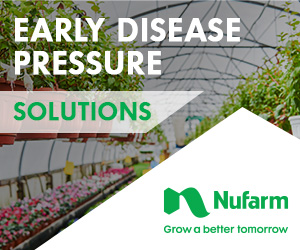Lessons Learned from Greenhouse Control System Upgrades

The ability to integrate lighting, irrigation, and sensors in a new greenhouse control system can make creating the ideal growing environment more attainable.
Photo courtesy of Wadsworth Control Systems
When I ask growers about their job description, the response is often that of the self-sufficient: manager, electrician, plumber, chemist, R&D – the list goes on. But their passion is always caring for their crop. Finding the time to focus on growing in the midst of other responsibilities means they must run a tight operation.
Antiquated control systems can be the culprit when ranges struggle. Often manual or independent systems, or a combination of the two, mean growers have to physically check the greenhouse to confirm equipment is working properly. When the systems don’t communicate with each other, the lack of prioritization undermines the grower’s climate goals and potentially affects the crop quality. At the very least, it’s inefficient.
If this sounds familiar, it may be time to upgrade.
“Our old system took too much time to manage,” says Ron Wiessner, Head Grower at Kloosterman’s Greenhouses in Mattawan, MI. “Our decision was based on making a technological leap forward.”
For others, a small upgrade turned into a bigger goal.
“We upgraded one zone and decided we had to do them all,” says Chris Schwartz, Business Manager and Grower at Schwartz’s Greenhouse in Romulus, MI, which began to transition from thermostats to integrated controls five years ago.
Controls that are no longer supported can also be a liability.
“Our controls were on their last legs,” says Deke Jackson, General Manager at Bonnie Plants’ facility in Connellsville, PA. “If the old system failed, there wasn’t any backup. It was time.”
Know Your Current and Future Needs
Once you make the decision to upgrade, your focus should shift to considering operational requirements. Review your entire system. If your equipment has moved forward, but your controller was left behind, it may be just a control upgrade. Even if your equipment is in good shape, you may want to add to the system. Lighting, irrigation, and new sensors can make creating the perfect growing environment more attainable and may not have been an option with the older control.
While this is where finances come into the picture, you need to make certain the controls meet your needs for today and the future. Jackson says he was looking for a control that could manage four existing ranges and support plans to triple the operation’s capacity in the coming years. Purchasing a control that fits a tight budget and can’t meet tomorrow’s demands is not a good investment.
Also, consider your plans for crop diversification. The equipment and control must be able to address new needs for the additional crop, such as additional lighting or sensors. Make certain your system has extra inputs and outputs for additional equipment, both unexpected and planned. Upgrades can potentially use existing panels if they are in good shape, but be sure to consider installation cost. If the contactor panels are spread throughout the range and the breakers are in one box, it might make sense to place new panels next to the breaker – a simpler and less expensive solution.
It takes time to gather information for an upgrade, including the specs on existing equipment, especially if the system is complex, Jackson says.
“The more equipment you have, the more questions you should be asking,” he says.
You also need to consider that the coordination of equipment changes in modern systems. Newer controls have more options in deciding the order of equipment, or when it engages. For example, Jackson is integrating lighting with his new system.
“I’m able to measure indoor and outdoor light values and consider my daily light accumulation,” Jackson says. “The lights need to be used wisely and correctly to get the best return. I don’t want to waste energy and need to know my threshold.”
A Degree of Comfort
Schwartz is using his control to manage seven independent ranges that will change to a single large space this spring when the retail store opens.
“There were so many moving parts that needed to work together,” he says. “I can put it all on a single control [in this case, Wadsworth Control Systems’ Seed] that coordinates one giant area. That frees me up in May when we need to keep the customers comfortable. I can attend to other priorities.”
When asked what the best return for the investment has been, time is a key factor.
“Time is your most valuable asset,” Schwartz says. “We’ve added perennials, and that’s because of the time I have to focus on this while maintaining all the other sides of our business.”
Wiessner concurs.
“It gives you more time to care for the crop, which gives you a better product,” he says. “It’s all about having a quality crop that’s efficiently produced.”
Each of these growers used both the companion software and the control in the greenhouse. For Wiessner and Jackson, the manual overrides on the control made it easier to quickly adjust settings during unpredictable weather conditions.
Finding a control company that makes the upgrade smooth and successful is also key.
“The upgrade alone will take a lot of stress out of your life. What really helps is the support a control company offers,” Wiessner says.









